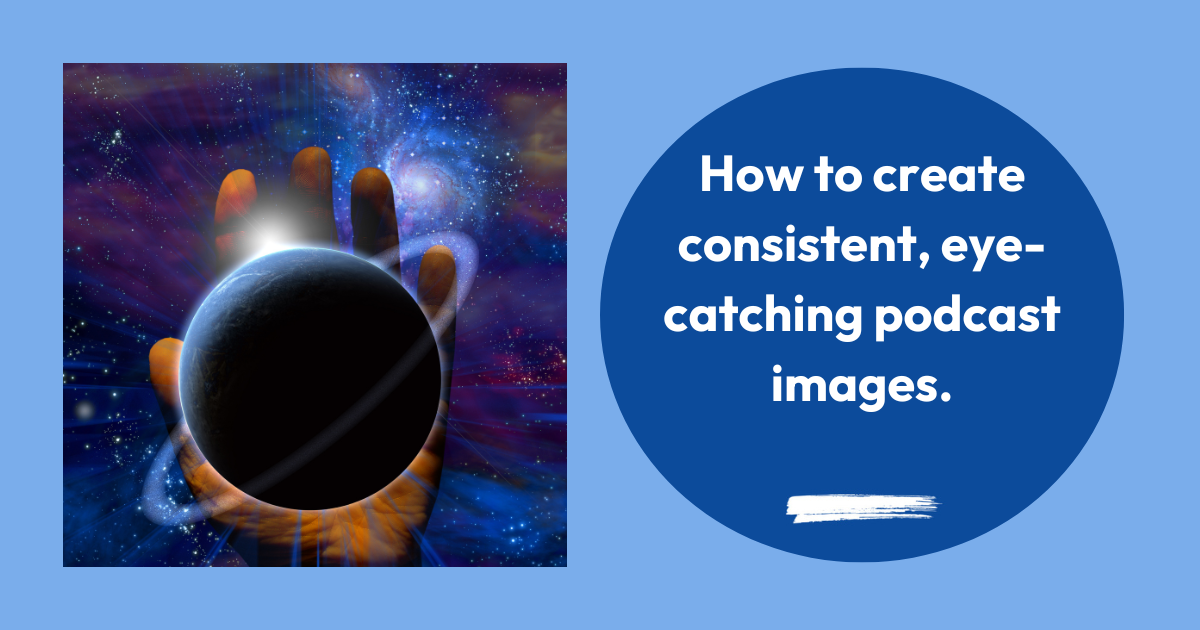
Visual Get People to Click
Podcasting is an audio medium, but visuals play a surprisingly important role in how audiences discover and remember your show. A strong podcast image can make the difference between a potential listener clicking play or scrolling past.
From cover art in podcast directories to episode thumbnails and social media posts, your visuals tell the story of your brand. When used effectively, they reinforce recognition, attract new listeners, and increase shares.
At Podpage, we’ve seen that well-designed podcast images consistently lead to higher engagement. Here’s how to create images that work — and how Podpage can help automate and optimize them.
1. Keep your episode images consistent
Visual consistency builds trust and brand recognition. Listeners should recognize your podcast’s identity instantly, whether they see your cover art on Spotify or an episode post on Instagram.
Use the same color palette, typography, and logo placement across all episode images. A simple, unified style makes your feed look professional and cohesive.
Podpage automatically applies your show’s visual identity to each episode page, pulling colors, fonts, and artwork from your main podcast feed. This ensures every new episode fits seamlessly into your overall design — no manual formatting required. For more information on the importance of consistency with your brand, see this monthly meetup replay.
2. Optimize for every platform
Every platform displays your artwork differently. A design that looks great in Apple Podcasts might appear cropped or pixelated on social media.
Here are general size recommendations:
- Podcast directories: 3000x3000 pixels (JPG or PNG)
- Instagram: 1080x1080 pixels
- X (Twitter): 1200x675 pixels
- Facebook and LinkedIn: 1200x630 pixels
Using the right size and aspect ratio ensures your images stay sharp and properly framed wherever they’re displayed.
Podpage automatically optimizes your images for web and social sharing, generating Open Graph images so that episode pages look clean and clickable across all platforms.
For information on banner images to use in Podpage see this article.
3. Design for clarity and contrast
When it comes to podcast art, simplicity wins. Avoid cluttered designs and busy backgrounds. Choose bold, legible text and clear focal points that stand out even at thumbnail size.
Strong contrast between background and text ensures titles remain readable on any screen. For example, use dark text on a light background or vice versa.
A clean, focused design communicates professionalism and helps your show stand out among hundreds of competing visuals.
4. Use visuals to tell the story of your episode
Your episode artwork doesn’t just identify your show — it can also communicate what each episode is about. A visual hint of the topic or mood can help listeners connect with the content before they press play.
If an episode features a guest, include their photo or a recognizable element related to the discussion. For narrative shows, a symbolic image or object can create curiosity and anticipation.
Podpage makes this easy by allowing custom episode images that automatically appear on both your website and social share previews.
5. Automate your visuals with Podpage
Designing, resizing, and uploading new images for every episode can take valuable time away from creating content. Podpage streamlines this process.
When you publish a new episode, Podpage pulls the image from your podcast feed or allows you to upload a custom version. It then automatically creates optimized Open Graph and social images, ensuring each episode page looks great on every platform.
Whether you manage visuals yourself or work with a designer, Podpage helps maintain consistent, high-quality presentation with minimal effort.
Images Are An Extension of Your Brand
Podcast visuals aren’t just decoration — they’re an extension of your brand and one of the first things potential listeners notice.
Consistent, well-designed images help your show look polished and trustworthy, while optimized formats ensure your content performs across every platform.
Podpage helps podcasters take the guesswork out of image management — keeping every episode, guest, and page visually consistent and ready to share.


